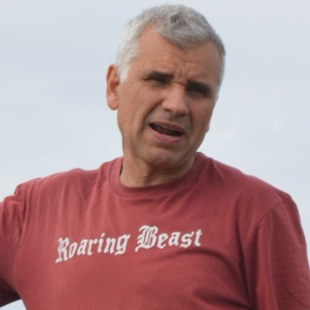Mineralogy, Geochemistry and Fluid Inclusion Study of Gold Deposits Endowed in Critical Metals
A special issue of Minerals (ISSN 2075-163X). This special issue belongs to the section "Mineral Deposits".
Deadline for manuscript submissions: 31 July 2024 | Viewed by 464
Special Issue Editors
Interests: ore deposit modelling, orogenic gold, structural geology, metamorphic petrology, Archean
Special Issues, Collections and Topics in MDPI journals
Interests: ore deposits; porphyry-epithermal mineralization; mineralogy; geochemistry; fluid inclusions
Special Issues, Collections and Topics in MDPI journals
Interests: ore minerals; critical metals; magmatic-hydrothermal ore deposits; mineralogy of hydrothermal alterations in porphyry-epithermal systems; mineralogy and genesis of gemstones
Special Issues, Collections and Topics in MDPI journals
Interests: isotope geochemistry; minerals; geochemistry exploration; geology; petrography; geological processes; petrology exploration
Special Issue Information
Dear Colleague,
Gold deposits have been found in a variety of geological settings throughout the earth’s geological history, since the early Archean. Processes leading to primary concentrations of gold can still be detected in active geothermal areas at present. Gold is typically found in a variety of forms and in association with other metals and metalloids like silver, tellurium, copper and lead, as well as in sulfides, sulfosalts and gangue minerals such as quartz and calcite. Some of these metals and metalloids are considered critical metals since they are vital to important modern technologies and, in many cases, can be extracted as co- or by-products.
The mineralogical composition of gold deposits and their degree of endowement in critical elements significantly varies depending on the geological processes, the environment and the physicochemical conditions of their formation. Geochemical processes play a crucial role in their concentration and dispersion in the Earth's crust. Studies on the geochemistry of gold mineral systems can be used to trace the origin of the ore-forming fluids, the source of gold, the transporting form of Au and conditions of concentration in the form of native metals, alloys and substitutions in the structures of ore minerals.
Furthermore, fluid inclusion studies help to determine the composition and physical state characteristics of the fluids, the temperature and pressure during ore deposition, and the evolution of the metallogenic system.
Understanding the mineralogy, geochemistry, and structural geology of gold deposits is crucial for mineral exploration, as it provides valuable information for targeting areas with the potential for economic gold and critical metal concentrations. It is also a prerequisite when deciding the feasibility of extracting these from specific deposits, as well as determining the most effective extraction and processing methods.
This Special Issue invites contributions that apply mineralogy, geochemistry (major and trace elements, stable and radiogenic isotopes), fluid inclusions and fluid–rock interaction studies in gold deposits endowed in critical metals that have been formed in various geological systems. We encourage original and review papers covering novel techniques, developments and applications in applied mineralogy, geochemistry, and fluid inclusions.
Dr. Grigorios Aarne Sakellaris
Prof. Dr. Vasilios Melfos
Prof. Dr. Panagiotis Voudouris
Dr. Ferenc Molnár
Guest Editors
Manuscript Submission Information
Manuscripts should be submitted online at www.mdpi.com by registering and logging in to this website. Once you are registered, click here to go to the submission form. Manuscripts can be submitted until the deadline. All submissions that pass pre-check are peer-reviewed. Accepted papers will be published continuously in the journal (as soon as accepted) and will be listed together on the special issue website. Research articles, review articles as well as short communications are invited. For planned papers, a title and short abstract (about 100 words) can be sent to the Editorial Office for announcement on this website.
Submitted manuscripts should not have been published previously, nor be under consideration for publication elsewhere (except conference proceedings papers). All manuscripts are thoroughly refereed through a single-blind peer-review process. A guide for authors and other relevant information for submission of manuscripts is available on the Instructions for Authors page. Minerals is an international peer-reviewed open access monthly journal published by MDPI.
Please visit the Instructions for Authors page before submitting a manuscript. The Article Processing Charge (APC) for publication in this open access journal is 2400 CHF (Swiss Francs). Submitted papers should be well formatted and use good English. Authors may use MDPI's English editing service prior to publication or during author revisions.
Keywords
- gold
- critical metals
- ore mineralogy
- ore geochemistry
- fluid inclusions
- mineral system
- deposit modeling
- mineral exploration








